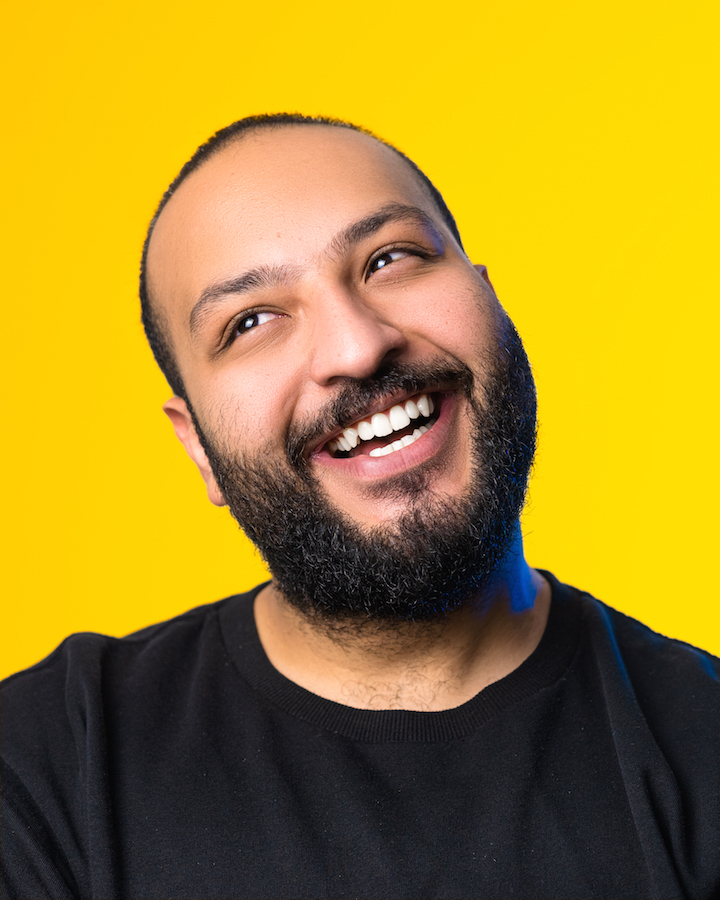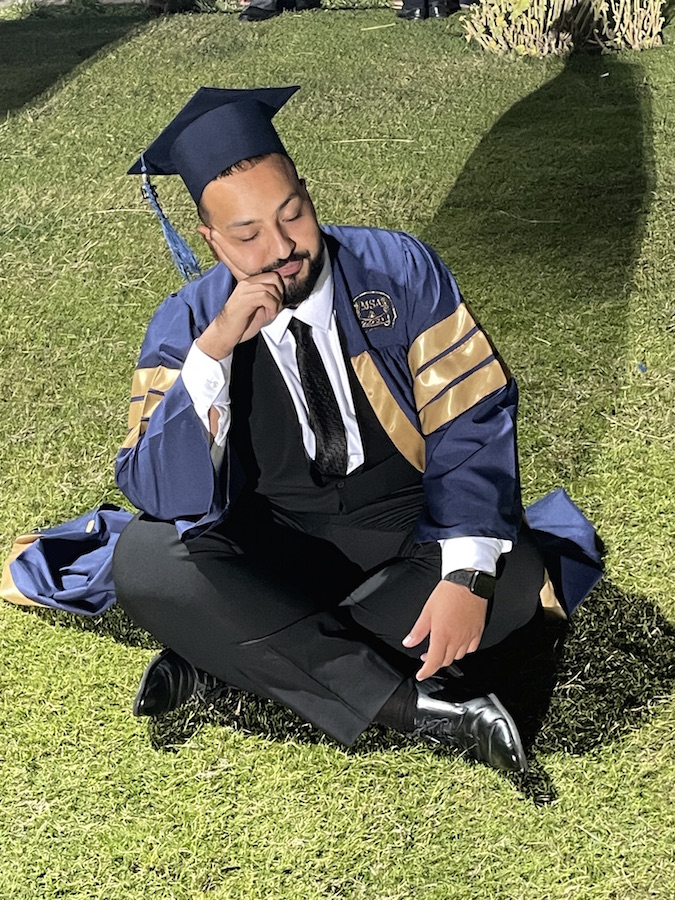DUBAI: It’s a strange life being a content creator. Take Egyptian social-media star Mohammed Tarek, for example. He’s a dentist by day — graduating earlier this year after six years of exhaustive study in Egypt — but in his free time he makes comedy videos, often talking directly to his phone. He puts on voices and does parodies from his bedroom, putting together whatever bits come to mind when he wakes up in the morning before work. By all accounts, he’s a humble, normal person who spends his time with his friends and family. But you’d never know it when he goes to the mall. There, he is a superstar, swarmed by fans.
“I still remember the first time I got stopped back in 2016,” Tarek tells Arab News. “I was just walking with my sister in the mall, and this girl came up to me. She said, ‘Hey! I love your videos!’ I was like, ‘What? You actually watch my videos?’ She said, ‘Yeah, I would love to take a picture.’ I was stunned. I said, ‘No, I want to take a picture with you!’”

Getting stopped by strangers has become a regular occurrence for Mohammed Tarek. (Supplied)
Since then, getting stopped by strangers has become a regular occurrence for Tarek, who has won legions of fans across the region, amassing 4.3 million followers on TikTok, another 2.3 million on Instagram, and more than half a million on YouTube. He’s even caught the eye of the biggest movie studios in the world, recently getting the nod to voice Aquaman in the Arabic-dubbed version (reanimated so that the character’s mouths move properly with the spoken Arabic) of Warner Bros. summer animation blockbuster “DC League of Super-Pets” — a role played by New Zealand comedian Jermaine Clement in the English-language version. It was a call he never saw coming.
“It’s not the most random thing that’s ever happened in my life, but it’s pretty random,” he says. “The call I got to get the role was insane. I was sitting in uni, just minding my own business, and somebody just called me from this random number, right? I answered it, and they're like, ‘Hey, do you want to be Aquaman?’ I was like, ‘Yeah, sounds good!’”

Mohammed Tarek voices Aquaman (second from left) in the Arabic version of ‘DC League of Super-Pets.’ (Supplied)
Voice acting has always been one of Tarek’s dreams. He has amassed dozens of his own characters that poke fun at different Egyptian cultural archetypes.
“I’ve always been a fan of voiceover work. Growing up, I found it crazy how people could put so many emotions across just through their voice. The animation is there, of course, to express something, but the voice is the main thing. The voice is what you remember. I would grow up watching Arabic-dubbed cartoons and movies, so being able to move into that world is really full circle for me, and I love it just as much as I thought I would,” says Tarek.
Like most comedians, growing up, Tarek’s first audience was his family, using his personality to cheer them up in the darkest of times.
“I’m the youngest, with two older sisters. I remember one day, my sister came home crying from school. She was really devastated. My father tried to calm her down, but nothing worked. I said to myself, ‘I need to fix this.’ So all I did was come up to her and crossed my eyes. I said, ‘Hey, look at me!’ She burst out laughing. I thought, ‘This is the thing I’m going to do from now on,’” says Tarek.
Tarek was born in Saudi Arabia, moving to Egypt just as he entered his teens. There, he used comedy to fit in with his new classmates, who were very different from the ones that he had known and had initially intimidated him. His plan worked, and he even won over his teachers in the process.

After six years of exhaustive study, Tarek recently graduated from MSA University in Egypt. (Supplied)
“I used to write songs about my teachers, taking the melody of popular songs and rewriting the lyrics to suit each of them. The students would laugh, but the teachers would actually laugh with us too. I would stand on a podium in front of the class and they would sit behind me and loved it. My parody songs became a yearly ritual in our school,” he says.
Tarek first moved into content creation in the early days of YouTube on the now-defunct short-video platform Vine. But he never really expected to find an audience beyond his own home.
“Each of my videos would have five views,” he says. “Four of them would be me, and the other view would be my mom.”
But in 2016, Tarek made two covers that were similar in spirit to the ones he used to write about his teachers, taking popular songs by Adele and Hozier and singing new lyrics from the perspective of one of his Egyptian characters. He thought nothing of them — until the view count started to climb.
“I woke up one day and thought, ‘What is going on? Why do I have a 100,000 views?’ Then it was ‘Why do I have five million views? What is going on?’ That was the moment when people really started to respond to me,” says Tarek.
As his star rose, he refused to abandon his plans and launch himself fully into content creation, deciding to stick in school and make videos when he found the time. It’s a choice he doesn’t regret, even now as he’s finally practicing dentistry, but it’s been more exhausting to balance than he usually admits to people.
“I have a lot of friends who are in the social-media area, and they’re exhausted from all they do. I have a lot of friends in the dentistry area, and they’re all burned out. None of them can really relate to what I go through. I’m tired from being a content creator and I’m tired from being a dentist every day. Who does that? Whenever I’m feeling low, it all just hits me. But right now, I’m doing fine,” he says with a smile. “Right now, I’m on a roll.”
Tarek isn’t content with just social media and dentistry, either. The shift into acting with “DC League of Super-Pets” is one that Tarek is taking seriously, and one that he plans to pursue fully.
“Right now, I’m trying. I'm starting to take acting workshops, which is a huge step for me, because I would never have done that back in the day. Nobody believes it, but, naturally, I’m a really shy person. I was the timid, naïve guy sitting in the corner because I didn’t want to deal with people. A part of me doesn’t understand myself right now, but that doesn’t mean I’m going to stop,” says Tarek.
“I have no idea where I’m going to be five years from now. I’m just going to keep going. If I get offered an audition, I’ll go. I’m going to take any opportunity that’s in front of me. You just have to work, you know what I mean? I truly believe that,” he says. “And I know that’s going to take me wherever I’m supposed to be.”














